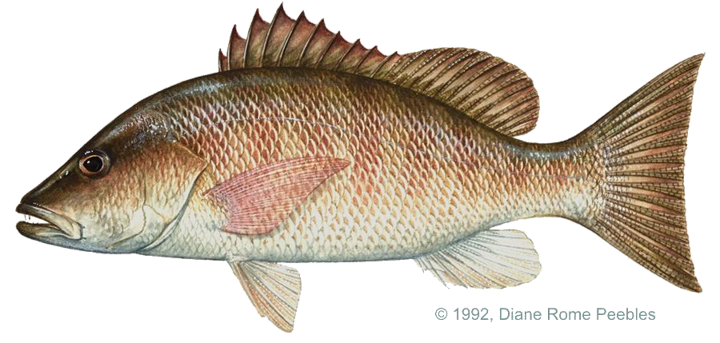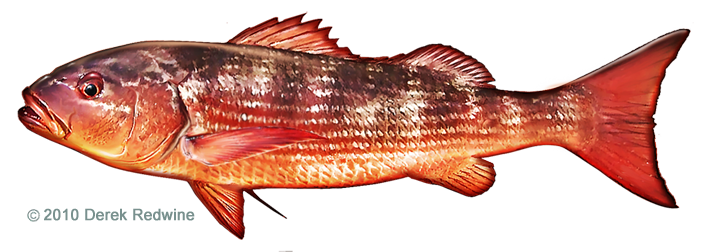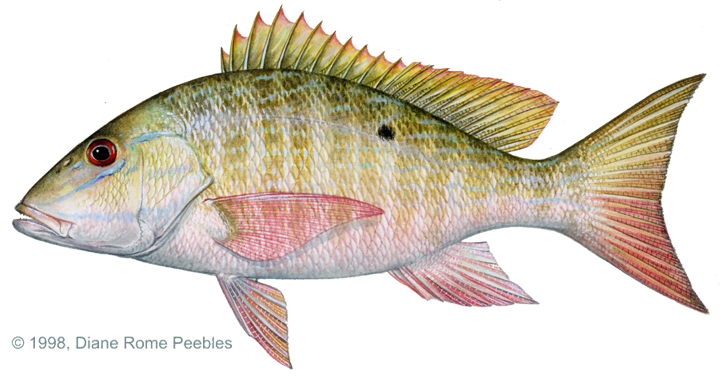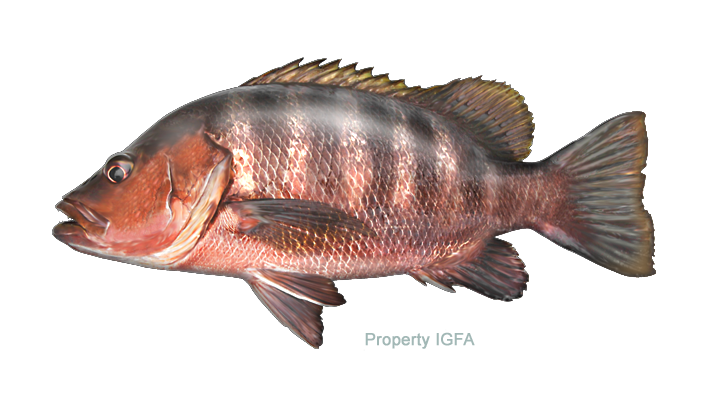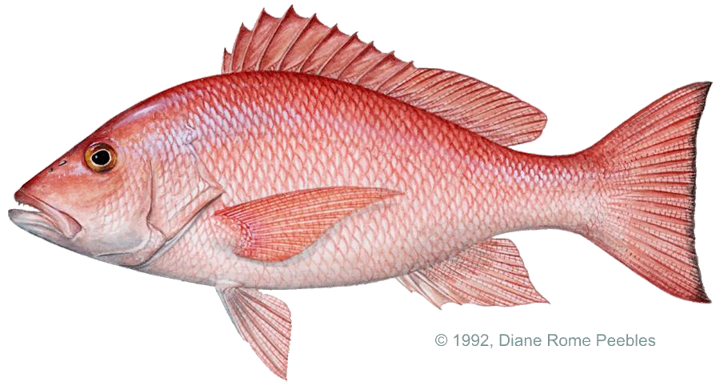Game Fish Identification Reference Guides
Snapper, African red
(Lutjanus agennes)
(Lutjanus agennes)
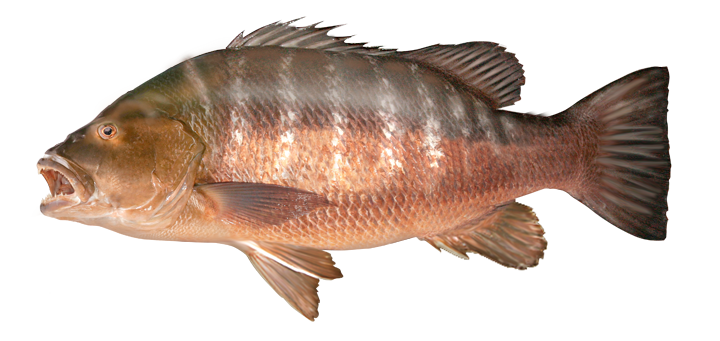
Bleeker, 1863; LUTJANIDAE FAMILY; also called Guinean snapper, African cubera snapper, jaabaar, diabar, carpe rouge.
It is known only from the West African coast in the region between Senegal and Angola where it occurs on rocky bottoms and coral reefs. It is also common in brackish lagoons and rivers, particularly the juveniles. Coloration is variable, usually reddish brown to slightly dorsally, grading to whitish ventrally. The tips of the anal and caudal fins are very dark.
The body is relatively deep for the genus with the head pointed, the dorsal profile of forehead somewhat angular. The preorbital bone is broad and the maxilla extends nearly to mid-eye level. The vomerine teeth occur in a triangular patch, some times with a short median extension posteriorly. About 7 well formed gill rakers are found on the first arch.
The Guinean snapper can be distinguished from other snappers by the following characteristics: L. dentatus and L. endecacanthus have 8-10 rows of cheek scales and the longitudinal scale rows above the lateral line slant upward. In L. agennes, there are 5-7 rows of cheek scales and the longitudinal scales are parallel above the lateral line except on the caudal peduncle. L. fulgens has 16 well-formed gill rakers on the first gill arch where L. agennes has 7-9. L. goreensis has a vomerine tooth patch with an elongate median extension posteriorly.
Like other large snapper, the Guinean snapper is generally caught bottom fishing. It is an important food fish in the subsistence fishery.
It is known only from the West African coast in the region between Senegal and Angola where it occurs on rocky bottoms and coral reefs. It is also common in brackish lagoons and rivers, particularly the juveniles. Coloration is variable, usually reddish brown to slightly dorsally, grading to whitish ventrally. The tips of the anal and caudal fins are very dark.
The body is relatively deep for the genus with the head pointed, the dorsal profile of forehead somewhat angular. The preorbital bone is broad and the maxilla extends nearly to mid-eye level. The vomerine teeth occur in a triangular patch, some times with a short median extension posteriorly. About 7 well formed gill rakers are found on the first arch.
The Guinean snapper can be distinguished from other snappers by the following characteristics: L. dentatus and L. endecacanthus have 8-10 rows of cheek scales and the longitudinal scale rows above the lateral line slant upward. In L. agennes, there are 5-7 rows of cheek scales and the longitudinal scales are parallel above the lateral line except on the caudal peduncle. L. fulgens has 16 well-formed gill rakers on the first gill arch where L. agennes has 7-9. L. goreensis has a vomerine tooth patch with an elongate median extension posteriorly.
Like other large snapper, the Guinean snapper is generally caught bottom fishing. It is an important food fish in the subsistence fishery.














